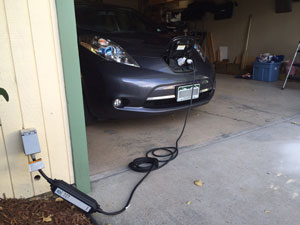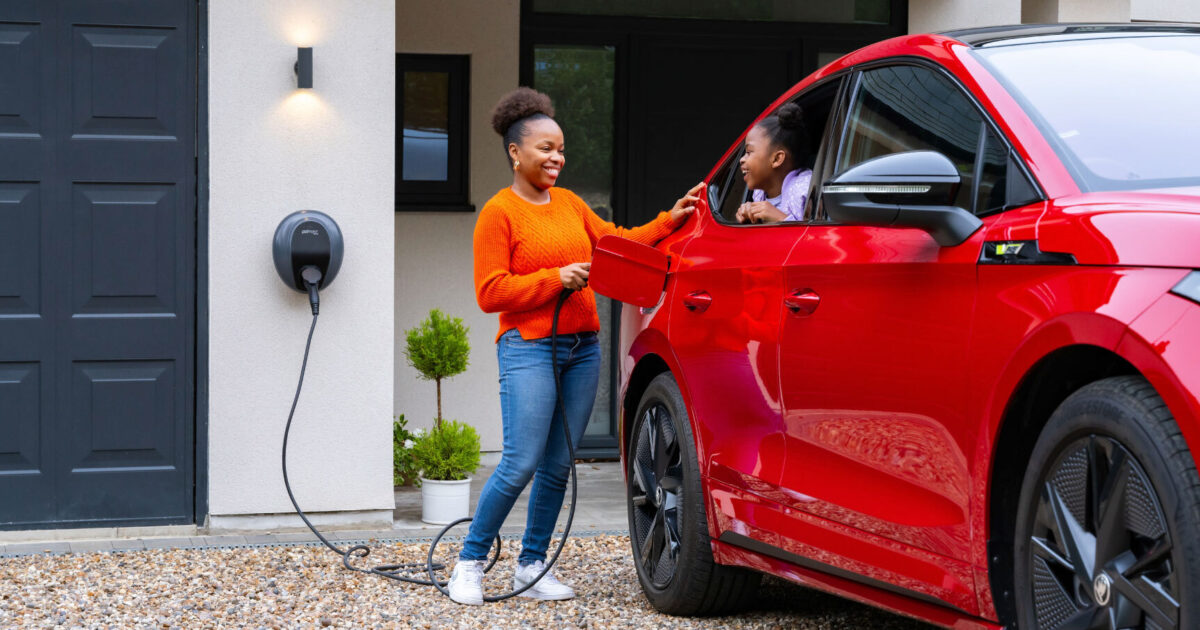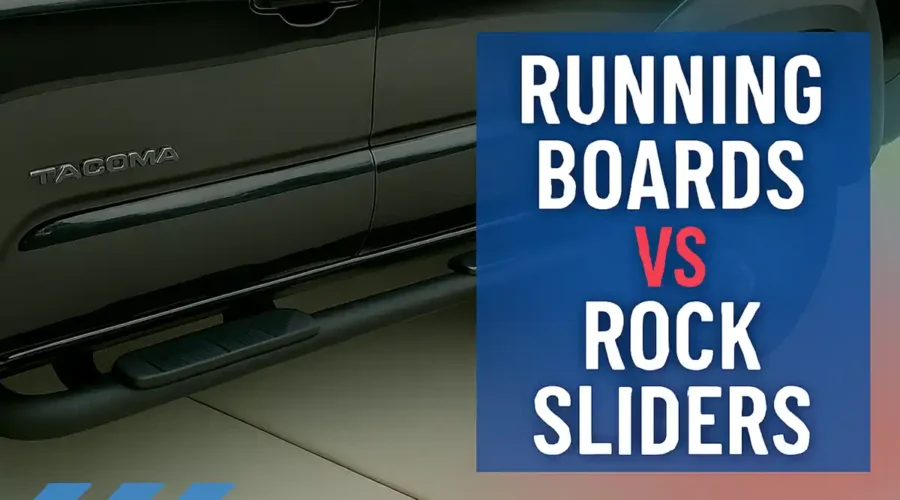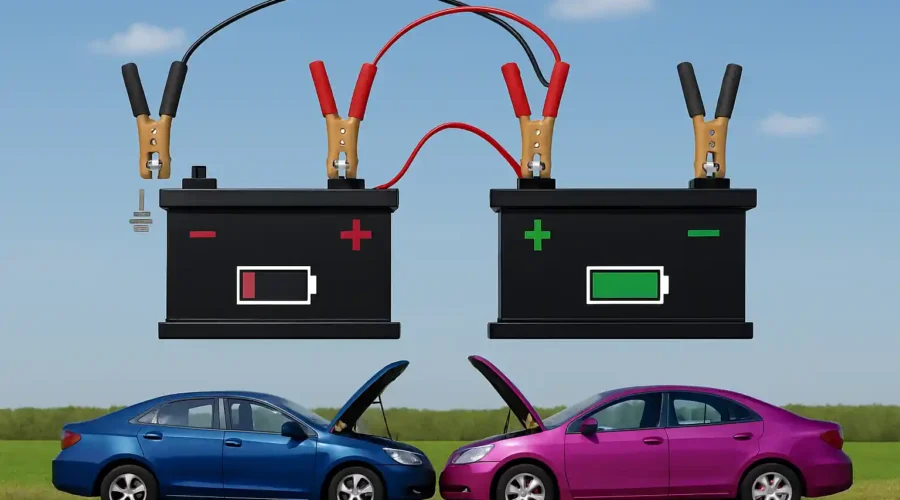Charging an electric car at home has become increasingly popular, but is it inherently risky? With more people making the switch to electric vehicles, the question of home charging safety has become vital. An eye-opening statistic reveals that nearly 90% of all electric car charging is done at home, raising concerns about potential hazards.
The history of electric vehicle charging dates back to the early 1900s when electric cars first appeared. Modern advancements have made charging more accessible, yet it’s essential to understand potential risks. Proper installation of charging equipment and adherence to safety standards are crucial to minimizing danger, ensuring a safe and reliable home charging experience.
Charging an electric car at home is generally safe if proper precautions are taken. It requires the use of certified charging equipment, professional installation, and adherence to safety guidelines. Regular maintenance and timely inspections minimize risks, such as electrical faults or overheating, ensuring a secure and efficient charging process.

Is It Dangerous to Charge an Electric Car at Home?
Charging an electric car at home generally poses little risk when done correctly. A key factor is ensuring you have the right equipment installed by a professional. Misusing a charging cable or incorrectly installing a home charging station can lead to problems. According to the National Fire Protection Association, proper installation and maintenance can prevent most hazards. Installing a Level 2 charger can enhance safety by providing controlled, faster charging.
One common worry is the potential for an electric car battery to overheat. Modern electric vehicles, like those from Tesla, have advanced safety systems to monitor and regulate battery temperature. However, plugging into an old or damaged socket can be dangerous. Regularly inspecting your charging equipment and outlets is crucial for home EV charging safety. This practice can minimize risks.
Electricity usage during nighttime can also raise concerns, especially since many people prefer to charge their cars overnight. Charging electric cars at night can be safe if done properly. Ensure you use a dedicated circuit for your charger to avoid overloading your home grid. It’s also wise to install a surge protector to guard against electrical spikes. Following these tips can significantly reduce dangers of EV home charging.
Some risks include fire hazards due to overheating or faulty wiring. However, using a reputable EV charger and following manufacturer instructions mitigates these risks. It’s vital to watch out for any recalls on your charging equipment. This attention to detail keeps your home setup safe. Overall, with the right precautions, charging an electric car at home is safe and convenient.
Can you charge an EV at home? | 3 Tips for charging an electric vehicle at home
Overview of Electric Vehicle Home Charging Safety
Electric vehicle home charging safety is paramount for all EV owners. Proper installation and use of the charging equipment ensure safety. Incorrect setups can lead to electrical issues and fire hazards. Manufacturers provide guidelines to help users install home charging stations safely. Following these guidelines is essential.
Various safety features are built into modern home charging stations. These features include automatic shut-off to prevent overcharging. Overcharging a lithium-ion battery can lead to excessive heat and damage. Using a certified EV charger reduces the risk of these issues. Always opt for equipment tested for safety standards.
Regular maintenance checks are part of home charging safety. Inspect the charging cable and plug for wear and tear. Any damage should be repaired immediately. Keeping the charging area clean and dry is also crucial. These simple steps help maintain a safe charging environment.
Educational resources on EV charging safety are widely available. Online forums and manufacturer websites offer valuable tips. Utilizing these resources enhances overall safety knowledge. Staying informed about the latest safety practices is beneficial. Together, these efforts ensure a safe and efficient home charging experience.
Understanding Home Charging Installation for Electric Vehicles
Installing a home charging station for electric vehicles requires careful planning. Choosing the right location is the first step. The charging station should be near your parking spot and close to your home’s electrical panel. A licensed electrician should install the unit to ensure it meets local codes. Proper installation minimizes risks and ensures efficient charging.
There are different types of home chargers available. Level 1 chargers use a standard 120-volt outlet and are slower. For faster charging, a Level 2 charger is recommended, which uses a 240-volt outlet. The installation of a Level 2 charger may require electrical upgrades. Consulting with a professional helps determine your home’s readiness.
Installing a dedicated circuit for the charger is crucial for safety. This prevents overloading your home’s electrical system. An overloaded system can cause electrical fires and damage appliances. A dedicated circuit ensures the charger receives the proper amount of electricity. It also prolongs the life of your charging equipment.
Additional safety features can enhance your installation. Surge protectors guard against electrical spikes. Ground fault circuit interrupters (GFCIs) prevent shocks and electrocution. Weatherproof covers protect outdoor units from the elements. These features contribute to a reliable and safe home charging setup.
Electrical Safety Measures for Home Charging Stations
Electrical safety for home charging stations is a top priority for EV owners. The first step is using an electrician qualified to install EV chargers. They ensure that everything meets the National Electrical Code (NEC) standards. Proper installation prevents many potential hazards. This includes avoiding overloading your home’s electrical system.
A dedicated circuit for your EV charger is essential for safety. This circuit prevents electrical overloads that could cause fires. Overloaded circuits can damage your home’s wiring and other appliances. A 240-volt outlet is recommended for Level 2 chargers. This setup ensures your EV receives the right amount of power efficiently.
Using a Ground Fault Circuit Interrupter (GFCI) can enhance safety. A GFCI protects against electrical shocks by shutting off power if a fault is detected. This feature is especially useful for outdoor charging stations. Keeping your charging station dry and free from debris also helps. Regular checks and maintenance are important.
Another key safety measure is installing a surge protector. Electrical surges can damage your charger and car. A surge protector guards against this by blocking excess voltage. It’s a small investment for long-term safety. Many modern chargers come with built-in surge protection.
Always use high-quality charging cables and equipment. Cheap or damaged cables can pose significant risks. Inspect your cables regularly for wear and tear. Replace them immediately if you notice any damage. This simple step can prevent electrical issues and prolong the life of your charger.
Finally, keep your EV owners manual handy. It offers specific guidelines on safe charging practices. Following these manufacturer instructions ensures both safety and efficiency. Stay updated on any recalls or safety notices for your charging equipment. This helps you take timely actions to maintain safety.
The Role of Charging Equipment in Safety Assurance
Charging equipment plays a crucial role in ensuring the safety of electric vehicle charging. Certified EV chargers are designed to meet strict safety standards. These standards help prevent electrical accidents and malfunctions. Using non-certified or counterfeit chargers can pose significant risks. Always opt for equipment that is tested and verified.
Modern charging devices come with built-in safety features. These features include overcurrent protection and temperature control. Overcurrent protection prevents the charger from drawing too much electricity. Temperature control helps avoid overheating issues. Both features work together to maintain a safe charging environment.
Regular maintenance and inspections are essential for safety. Check your charging cables and connectors for any signs of wear. Damaged equipment can lead to short circuits and electrical fires. Replacing worn-out components helps maintain reliability. A well-maintained charging station is key to ensuring continuous safety.
Installation of the charging equipment should be done by professionals. They ensure that everything is set up according to local electrical codes. Proper installation minimizes the chances of wiring issues. It also ensures that the charger operates efficiently. Professional installation provides peace of mind regarding safety.
It’s also essential to follow the manufacturer’s guidelines for use. These guidelines offer specific instructions for safe operation. Ignoring these instructions can compromise safety. The guidelines also include tips for maintaining the equipment. Adhering to them ensures your charging station remains secure.
Common Misconceptions about Electric Vehicle Charging at Home
One common misconception is that home charging stations are too expensive to install. Many believe that setting up an EV charger requires significant financial investment. However, various incentives and rebates can reduce the cost. Additionally, the long-term savings on fuel make the initial costs worthwhile. Understanding these factors helps clarify the true cost.
Another myth is that charging an EV at home is dangerous. People fear that home chargers pose fire hazards or electrical risks. Correct installation by a licensed electrician greatly reduces these dangers. Modern chargers come with multiple safety features. These features ensure a safe charging process.
Many think that home EV charging is slow and inconvenient. This is not always the case. Level 2 chargers can fully charge an EV overnight. With a proper setup, charging an electric vehicle is both quick and easy. It fits seamlessly into daily routines.
Some believe that home charging greatly increases electricity bills. While charging an EV uses electricity, it often costs less than gasoline. Many people also charge their EVs during off-peak hours when rates are lower. This practice can further reduce costs. Over time, the savings are substantial.
Lastly, there’s a perception that all homes are not suitable for EV chargers. While some homes may require minor electrical upgrades, most can accommodate a charger. Consulting with an electrician can determine a home’s readiness. Usually, necessary modifications are straightforward. This makes home charging accessible to many more households.
Risk Assessment of Home Charging vs. Public Charging Stations
Home charging and public charging stations both have their advantages, but it’s essential to understand the risks associated with each. Home charging provides convenience as you can charge your EV overnight. However, if not installed correctly, home chargers can present dangers such as electrical fires or circuit overloads. Professional installation and regular maintenance can minimize these risks. It is crucial for ensuring safe home EV charging.
Public charging stations are designed to be user-friendly and safe, but they come with their own set of concerns. One significant risk is the potential for vandalism or tampering with the equipment. Poorly maintained public chargers can also cause issues like inconsistent power delivery. It’s advisable to check for well-maintained, reputable stations when using public chargers. The frequent use of unfamiliar equipment may require extra caution.
A notable advantage of home charging is control over the environment in which you’re charging your vehicle. You have the ability to manage who uses your charger and ensure it remains in good condition. This control reduces many external safety concerns found with public charging stations. On the flip side, having a dedicated setup at home might require specific infrastructure upgrades.
- Convenience: Home charging ensures your vehicle is ready each morning without needing a trip.
- Cost: Public chargers often charge higher rates than residential electricity prices.
- Availability: Sometimes finding an available public station during peak times can be a hassle.
Both home and public EV charging solutions offer unique benefits along with certain risks. Proper installation of a home charger by qualified professionals and adherence to safety protocols at public stations mitigates many hazards linked to EV charging. Being aware of each option’s strengths and weaknesses allows users to enjoy their EVs responsibly and safely.
Impact of Charging Speed on Safety
The speed at which you charge your electric vehicle can significantly affect safety. Faster charging methods, like Level 3 fast chargers, deliver higher electrical currents. These currents can generate more heat, which may pose a risk. This makes cooling systems and safety features like thermal management crucial. Slower charging methods, like Level 1 chargers, generate less heat, reducing safety concerns.
Different charging speeds also impact battery health. Fast charging can create stress on lithium-ion batteries over time. This stress might shorten the battery’s lifespan or lead to degradation. However, occasional use of fast chargers is generally safe for most EVs. Regular monitoring helps maintain battery health.
Home chargers commonly use Level 2 specifications. These chargers offer a balance between speed and safety. They’re faster than Level 1 chargers but don’t generate as much heat as Level 3. Installing Level 2 chargers at home requires professional electrical work. This ensures safe and efficient operation for daily use.
- Temperature: High-speed charging increases heat, requiring good thermal management.
- Usage Frequency: Frequent fast charging can affect battery longevity.
- Safety Features: Modern EVs include systems to manage safe fast charging.
Slower charging rates are often encouraged for overnight home charging. This aligns with typical energy usage patterns and reduces grid strain. Slower speeds also help in maintaining the battery’s overall health. Balanced charging practices can minimize risks and maximize battery lifespan. This ensures that charging at home remains a safe and efficient option.
Guidelines and Standards for Safe Electric Vehicle Charging at Home
Adhering to guidelines and standards is crucial for safe electric vehicle charging at home. The National Electrical Code (NEC) provides specific requirements for EV charger installations. These rules ensure that installations are safe and minimize electrical hazards. Hiring a licensed electrician familiar with these standards is essential. Proper installation can prevent many common electrical issues.
Regular inspections of your charging equipment are necessary to maintain safety. Look for any visible signs of wear and tear on cables and connectors. Damaged equipment should be replaced immediately. Regular maintenance checks can identify potential issues before they become serious. Ensuring that all components are in good condition enhances safety.
Using certified equipment is also important for safe charging. Chargers and cables that meet standards set by organizations like Underwriters Laboratories (UL) are tested for safety. Non-certified equipment can pose risks like overheating or electrical faults. It’s wise to invest in high-quality, certified charging products. This ensures reliability and safety.
Proper grounding of your charging equipment is another critical safety measure. Grounding prevents electrical faults from causing shocks or fires. Ensuring that your charging station is correctly grounded involves proper installation by professionals. Regular inspections can confirm that grounding measures remain effective. This adds an extra layer of security.
- Follow NEC requirements for installations.
- Conduct regular equipment inspections.
- Use certified chargers and cables.
- Ensure proper grounding of the charging station.
Understanding and following these guidelines and standards helps make home EV charging safe. These practices not only protect your vehicle but also your home. Avoiding shortcuts and using quality equipment will ensure a smooth and secure charging experience. Staying informed and attentive to these details is key to a safe home charging setup.
Technological Advancements in Safe Home Charging Solutions
Technological advancements in home charging solutions have made them safer and more efficient. Smart chargers are now available, featuring advanced monitoring systems. These systems can detect faults and adjust the charging rate to prevent overheating. Some smart chargers even send alerts to your phone if an issue arises. This real-time information enhances safety significantly.
Wireless charging is another innovative solution making strides in home charging technology. This technology allows for charging without plugging in cables. A charging pad installed on the ground connects to a receiver on the vehicle. Wireless charging reduces wear on charging connectors. It also minimizes the risk of electric shock from handling cables.
Advanced thermal management systems are critical for safe charging. These systems monitor and regulate the temperature of the charger. If the device gets too hot, the system can slow down or stop the charging process. This prevents overheating and potential fires. Maintaining an optimal temperature is key to ensuring safety.
- Smart chargers with real-time monitoring.
- Wireless charging pads reducing cable wear.
- Advanced thermal management systems.
- Enhanced user alerts for potential issues.
User-friendly apps are also playing a role in enhancing safety. These apps allow you to control and monitor your home charger remotely. From scheduling charging times to monitoring energy use, these features add convenience and safety. You can receive notifications about the charging status. The integration of technology streamlines the entire charging process.
Lastly, advancements in charger design focus on improving durability. Modern chargers are built to withstand harsh weather conditions. They feature rugged exteriors and water-resistant materials. These designs ensure longevity and safety. As technology evolves, home charging solutions will continue to become even safer and more reliable.
Preparing Your Home for Safe Electric Vehicle Charging
Getting your home ready for electric vehicle charging involves a few key steps. First, assess your home’s electrical capacity. Check if your electrical panel can handle the additional load of an EV charger. Consulting a licensed electrician is crucial for this step. They will help determine if any upgrades are necessary.
Next, choose the right spot for your charging station. It should be close to where you park your car, preferably inside a garage or near a driveway. Make sure the area is easy to access and free from clutter. This setup ensures that cables are not stretched or left lying around. A tidy charging space minimizes tripping hazards and other risks.
Installing a dedicated circuit for your EV charger enhances safety. This circuit prevents electrical overloads that can lead to fires. It also ensures that your other home appliances won’t be affected while charging your vehicle. Professional installation of this circuit is essential. A qualified electrician will make sure it meets all local codes and regulations.
Consider adding safety features to your charging station. These can include surge protectors and Ground Fault Circuit Interrupters (GFCIs). Surge protectors defend against unexpected power spikes. GFCIs shut off power if they detect a fault, preventing electric shocks. These additions provide extra layers of protection.
- Assess electrical capacity with a licensed electrician.
- Choose a convenient and clutter-free charging spot.
- Install a dedicated circuit for the EV charger.
- Add safety features like surge protectors and GFCIs.
Evidence suggests that routine maintenance boosts your setup’s safety. Regularly inspect cables and connectors for wear and tear. Clean the area around the charging station to keep debris away. Replace any damaged parts immediately. Keeping your charging station well-maintained ensures ongoing safety and effectiveness.

Frequently Asked Questions
Electric vehicle (EV) charging at home brings up several important questions. We’ve gathered some top queries to help clarify the process and ensure safety.
1. Can I charge my electric car using a standard household outlet?
Yes, you can charge your electric car using a standard household outlet, known as Level 1 charging. However, this method is slower and may take an entire day to fully charge the battery. It uses a 120-volt outlet similar to those used for small appliances.
For faster charging, many EV owners opt for Level 2 chargers, which require a 240-volt outlet. This type of charger usually charges the vehicle within a few hours, making it more convenient for daily use. Level 2 chargers should be installed by a professional electrician to ensure safety and efficiency.
2. What are the costs involved in installing a home EV charger?
The cost of installing a home EV charger varies depending on the type and installation complexity. A basic Level 2 charger ranges from $300 to $700, while installation costs can add another $200 to $1,200, depending on your electrical setup.
Some areas offer incentives and rebates that can help offset these costs, making it more affordable. It’s advisable to check with local utility companies or government programs for any available financial assistance before purchasing and installing an EV charger.
3. Do I need special insurance for my home EV charger?
Generally, your standard homeowner’s insurance should cover your home EV charger. However, it’s essential to inform your insurance company about the installation. This transparency ensures that any issues related to the charger will be covered under your policy.
Adding the charger might increase your premium slightly, but it’s important for adequate protection. Always review your policy details with your provider to confirm coverage specifics and ensure you’re fully protected against potential risks.
4. How often should I maintain my home EV charging station?
Regular maintenance checks are crucial for the safe operation of your home EV charging station. It’s recommended to inspect your charger and cables at least once a month for any signs of wear or damage. Ensuring that all parts are in good working condition can prevent potential hazards.
You should also have a professional inspection annually to ensure everything complies with safety standards. Keeping the charging area clean and free of debris also helps maintain an efficient and safe charging environment.
5. Can multiple electric cars be charged from one home charger?
Yes, multiple electric cars can be charged from one home charger, but it might require additional equipment. Some advanced chargers come with features that allow them to charge more than one vehicle sequentially. This ensures both vehicles are charged without overloading your electrical system.
If you frequently need to charge multiple EVs, consider installing a dual-port charger or having separate charging units. Always consult with a professional to determine the best setup for your specific needs and ensure it complies with electrical safety standards.
Who Needs Level 2 EV Charging at Home?
Conclusion
Charging an electric car at home is both convenient and generally safe when proper precautions are taken. Ensuring professional installation and adhering to safety guidelines are crucial steps. Regular maintenance and using certified equipment also contribute significantly to a secure setup.
Technological advancements continue to improve home EV charging safety, making it more accessible for everyone. Understanding the risks and implementing necessary safety measures can provide peace of mind. Ultimately, home charging remains an efficient and effective method for powering your electric vehicle.




